Priorities for Equitable Instruction: 2021 & Beyond
.png)
Designing equitable learning experiences requires educators to take a student-centered approach to planning. This resource collection uses key focus areas to help prioritize resources and planning time with the goal of creating inclusive, affirming, and academically rigorous learning environments for all students.
Human-Centered Learning
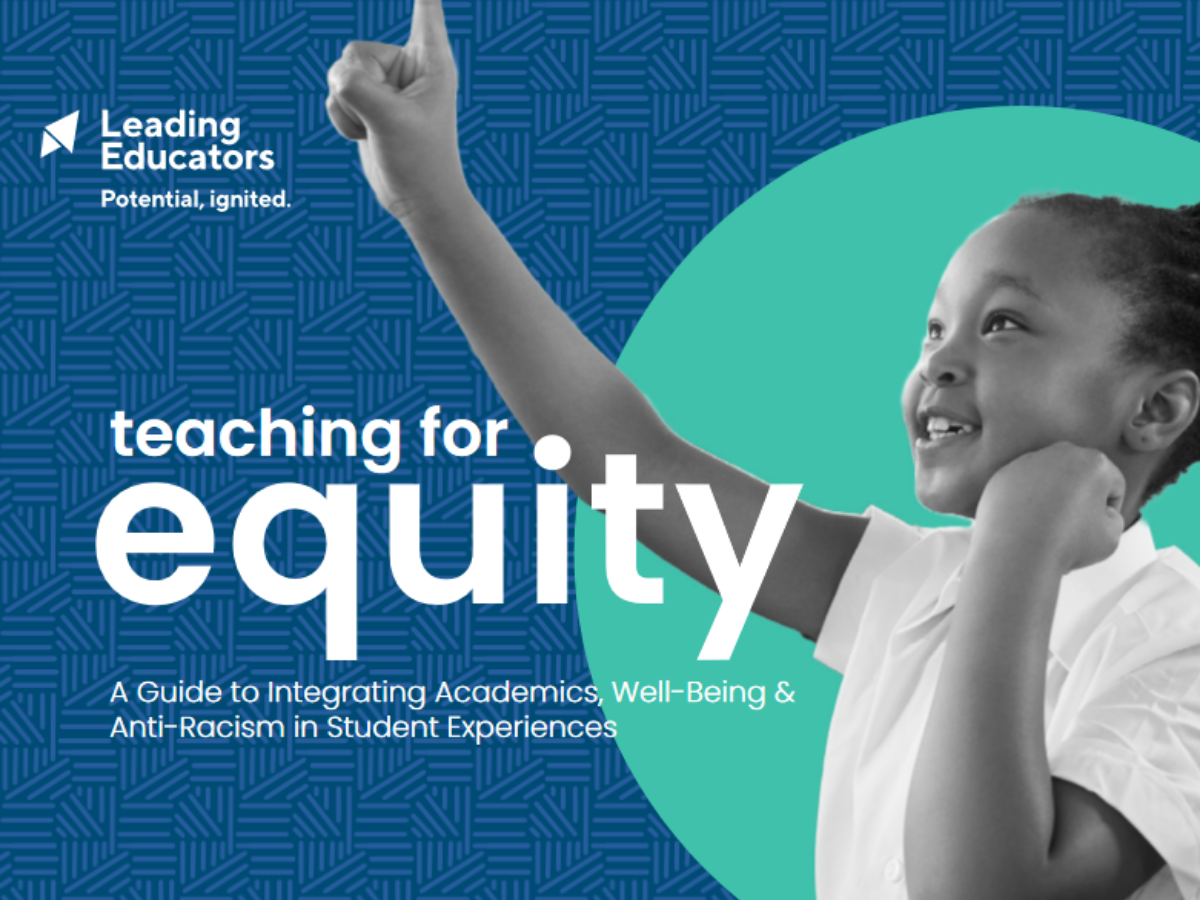
Teaching For Equity: A Guide to Integrating Academics, Well-Being & Anti-Racism in Student Experiences | Create supportive learning environments using this teacher-designed framework from Leading Educators. The framework includes five strands that facilitate structured reflection of classroom practice, school and community relationships, and your own identity as an educator. Working through the framework will help you translate beliefs into action.
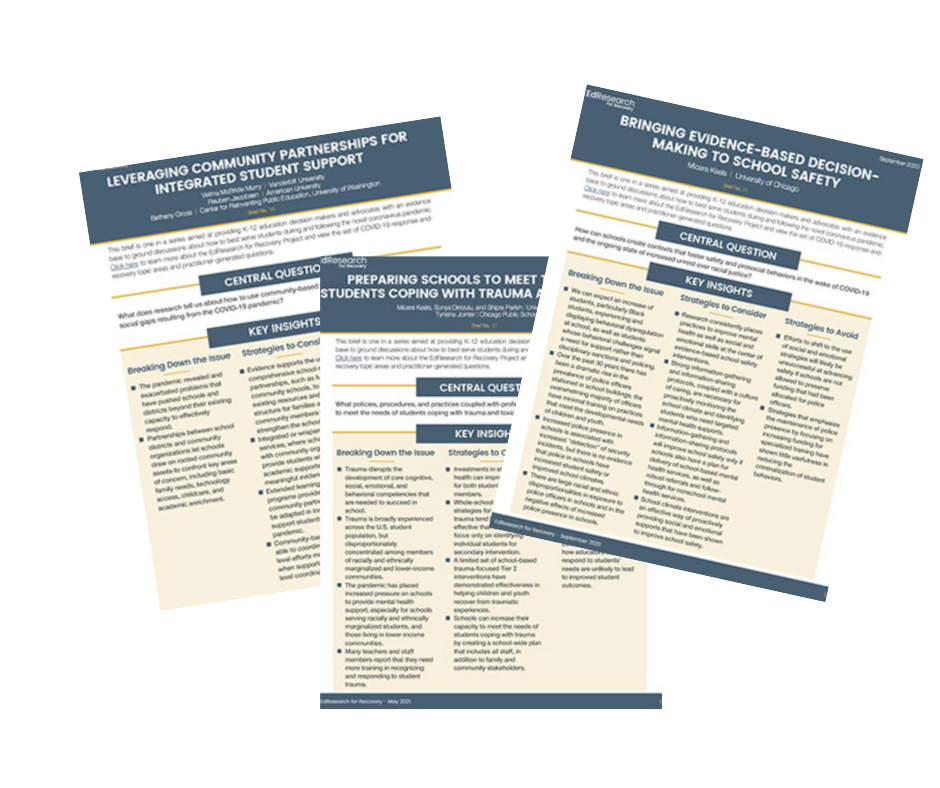
EdResearch for Recovery Project School Climate Evidence Briefs | Identify research-based strategies to improve school climate and foster safe, inclusive learning environments. This project from Brown University asked researchers from across the country to develop evidence briefs that point to research-based recommendations for supporting students. The school climate briefs cover topics such as trauma-responsive educational practices, community engagement, and how to rebuild a positive school climate after disruptions to in-person learning.
 Disrupting Inequity: Having Brave Conversations About Bias | Invite colleagues to join in a brave, honest discussion about bias in schools and its effect on students. The toolkit from UnboundEd contains individual PowerPoint presentations and materials containing detailed notes, resources, and activities designed to facilitate challenging discussions in a supportive professional learning space. Topics include microaggressions, historical implications of race, and actionable steps you can take to identify bias and improve school culture.
Disrupting Inequity: Having Brave Conversations About Bias | Invite colleagues to join in a brave, honest discussion about bias in schools and its effect on students. The toolkit from UnboundEd contains individual PowerPoint presentations and materials containing detailed notes, resources, and activities designed to facilitate challenging discussions in a supportive professional learning space. Topics include microaggressions, historical implications of race, and actionable steps you can take to identify bias and improve school culture. Let's Talk: Facilitating Critical Conversations With Students | Encourage students to be changemakers by creating a classroom environment where critical conversations about racial injustice, social inequality, and discrimination are addressed openly and often. This detailed guidance from Learning for Justice will help you develop the skills to facilitate honest communication around difficult topics through the implementation of classroom-ready strategies.
Let's Talk: Facilitating Critical Conversations With Students | Encourage students to be changemakers by creating a classroom environment where critical conversations about racial injustice, social inequality, and discrimination are addressed openly and often. This detailed guidance from Learning for Justice will help you develop the skills to facilitate honest communication around difficult topics through the implementation of classroom-ready strategies.Social, Emotional, and Academic Learning
Resources to Support Social, Emotional, and Academic Learning
- Creating Supportive Learning Environments (CASEL) Guidance & Resources
- Integrating Social, Emotional, and Academic Learning: An Action Guide for School Leadership Teams (The Aspen Institute) Report
- SEL Roadmap: Actions for a Successful Second Semester (CASEL) Guidance
Academic Acceleration
Learning acceleration is different than remediation – and more effective. Acceleration requires focusing on grade-level work, ensuring students access to that work, and offering support and connections to prior-grade learning, as necessary. Learn more in Accelerate, Don’t Remediate, a report by TNTP and Zearn.
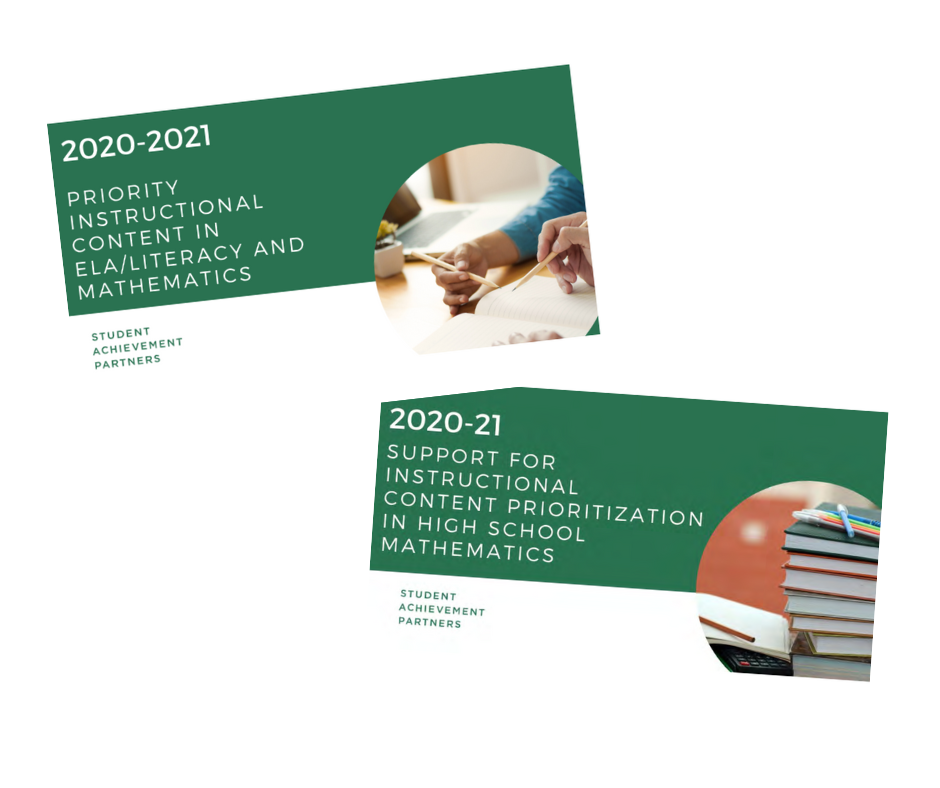
2020-21 Priority Instructional Content in English Language Arts/Literacy and Mathematics | These documents name instructional content priorities in mathematics (K–8, high school) and ELA/literacy (K–12). They support planning focused on keeping all students working on grade-level content. These were developed for the 2020–21 academic year in response to the disruption of the global pandemic, and they remain helpful for those setting academic priorities for the 2021-22 school year. Companion guidance is also available for families.
Setting Conditions for Accelerating Learning
Reading and Fractions

Reading science emphasizes two critical pieces in systematic early reading instruction: securing foundational skills and building knowledge and vocabulary These "Early Reading Accelerators" are essential content that all readers need access to in order to become proficient. While each student and their experiences are unique, we can accelerate the development of reading proficiency for all students by implementing these practices strategically through classroom instruction and materials. To learn more and examine the research base for literacy accelerators and the intersections of equitable personalization for students in ALL grades, explore Reading as Liberation. Invite students and their communities to understand how we learn to read and be partners in that learning with How We Read: A Graphic Guide to Literacy.
A robust body of research tells us that flexibility and accuracy with fractions are among the most critical elements for student success in later mathematics. The resources and support in this fractions collection are designed to develop educator understanding of fractions as well as facilitate the teaching and learning of fractions with students. For support on approaching unfinished learning in math on other topics visit Instruction Partners’ Supporting Unfinished Learning in Math.
Integrated Scaffolds and Support
 environments that focus on scaffolding and just-in-time instruction, rather than remediation. Every student is capable of grade-level work that keeps them on track for success after high school. Nearly all students contend with some degree of unfinished learning each year. Prepare to meet all students where they are with these proven strategies and practices.
environments that focus on scaffolding and just-in-time instruction, rather than remediation. Every student is capable of grade-level work that keeps them on track for success after high school. Nearly all students contend with some degree of unfinished learning each year. Prepare to meet all students where they are with these proven strategies and practices.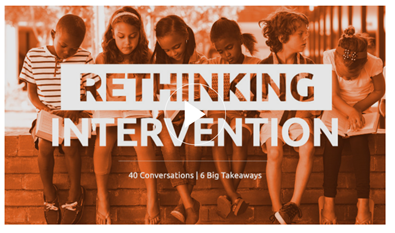
The Rethinking Intervention series from Instruction Partners features videos, PLC guides, and blog posts to help you rethink the concept of intervention to focus on student-teacher relationships and access to grade-level content.
 Perspectives on Scaffolding Student Work | Discover teacher-tested scaffolding strategies in this collection of blog posts.
Perspectives on Scaffolding Student Work | Discover teacher-tested scaffolding strategies in this collection of blog posts. English Learner Success Forum Resource | Deepen and accelerate English learners’ content area learning by implementing the strategies included in this collection of teacher-facing guidance. The activities and scaffolds in this collection from the English Learner Success Forum can be built into existing lessons and units to help English learners engage fully with the curriculum.
English Learner Success Forum Resource | Deepen and accelerate English learners’ content area learning by implementing the strategies included in this collection of teacher-facing guidance. The activities and scaffolds in this collection from the English Learner Success Forum can be built into existing lessons and units to help English learners engage fully with the curriculum.  Supporting all Students: Resource Guides for Scaffolding Instruction of English Langauge Arts and Mathematics | Expand access to grade-level content with these guidance documents from the New York State Department of Education offering grade-specific scaffolding guidance for instruction in grades 3-8. Examples are drawn from the open-source curriculum EngageNY, but can be applied to any set of materials.
Supporting all Students: Resource Guides for Scaffolding Instruction of English Langauge Arts and Mathematics | Expand access to grade-level content with these guidance documents from the New York State Department of Education offering grade-specific scaffolding guidance for instruction in grades 3-8. Examples are drawn from the open-source curriculum EngageNY, but can be applied to any set of materials.Culturally Relevant and Responsive Pedagogy
Whether you are practicing culturally relevant pedagogy (Dr. Gloria Ladson-Billings) or culturally
 responsive pedagogy (Zaretta Hammond), teaching requires thoughtful planning and a commitment from educators to get to know each and every one of their students each year. This work not only helps all students excel academically, but also helps expand perspectives, reaffirm identities, and prepare students to create a better world, using the skills and knowledge they gain in the classroom to demand and design change.
responsive pedagogy (Zaretta Hammond), teaching requires thoughtful planning and a commitment from educators to get to know each and every one of their students each year. This work not only helps all students excel academically, but also helps expand perspectives, reaffirm identities, and prepare students to create a better world, using the skills and knowledge they gain in the classroom to demand and design change.For a quick introduction to culturally relevant pedagogy, read this three-part blog series. Educators preparing to design culturally responsive learning environments can find tools, guidance, research, case studies, and more in NYU Metro Center’s Culturally Responsive Education Hub. Make sure to download Transforming Our Public Schools: A Guide to Culturally Responsive-Sustaining Education and the Culturally Responsive Curriculum Scorecard Toolkit, to jumpstart your work.
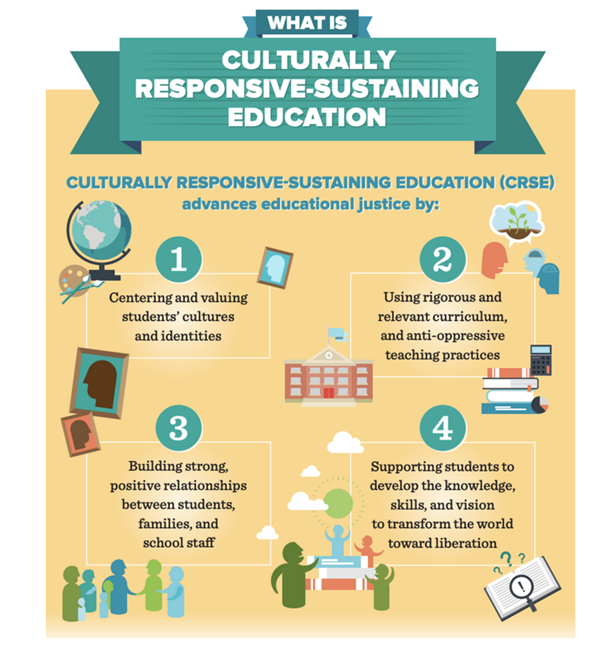
Looking to take the first step toward translating these concepts into action in your classroom? Begin by learning about the students you serve and their unique identities. Creating lessons and learning environments that are culturally relevant and/or culturally responsive will look different from classroom to classroom--because the students are different!
Understanding Student Progress
 Humanizing Assessment Blog Series | Gain practical, research-based advice on expanding the ways educators can gain insight on student progress that go beyond traditional assessment. These student-centered monitoring methods will transform the way you think about assessment.
Humanizing Assessment Blog Series | Gain practical, research-based advice on expanding the ways educators can gain insight on student progress that go beyond traditional assessment. These student-centered monitoring methods will transform the way you think about assessment. Rethinking Intervention Blog Series | Reenvision how you collect and use data on student progress. This collection by Instruction Partners includes a short video, professional learning materials and resources, and an overview blog post.
Rethinking Intervention Blog Series | Reenvision how you collect and use data on student progress. This collection by Instruction Partners includes a short video, professional learning materials and resources, and an overview blog post. What the Data Can't Tell Us | Learn about the limitations of summative data collected at the end of the 2020-21 school year. This blog post outlines cautions and concerns about using summative assessment data and presents alternatives for monitoring student progress.
What the Data Can't Tell Us | Learn about the limitations of summative data collected at the end of the 2020-21 school year. This blog post outlines cautions and concerns about using summative assessment data and presents alternatives for monitoring student progress.



.png)
.png)